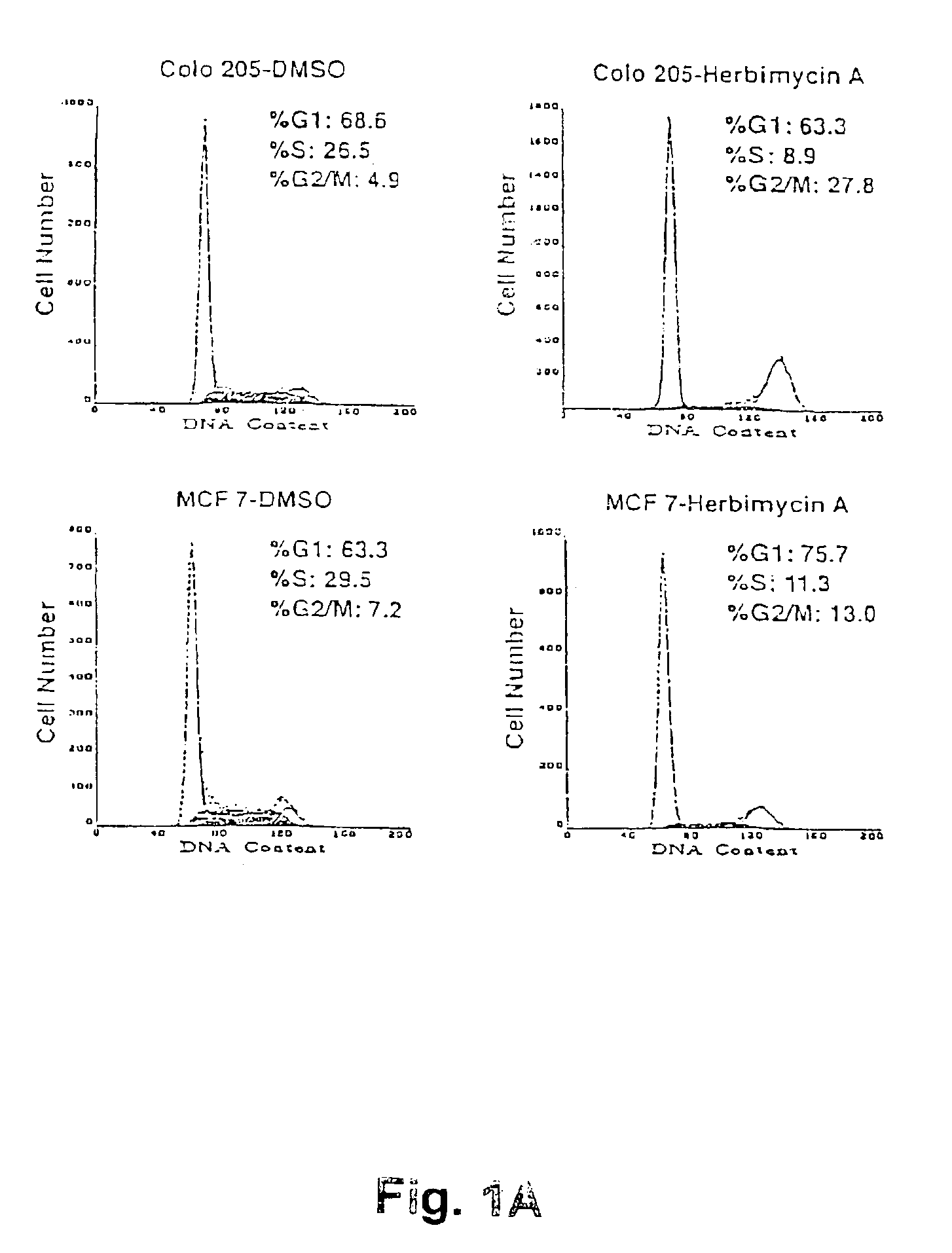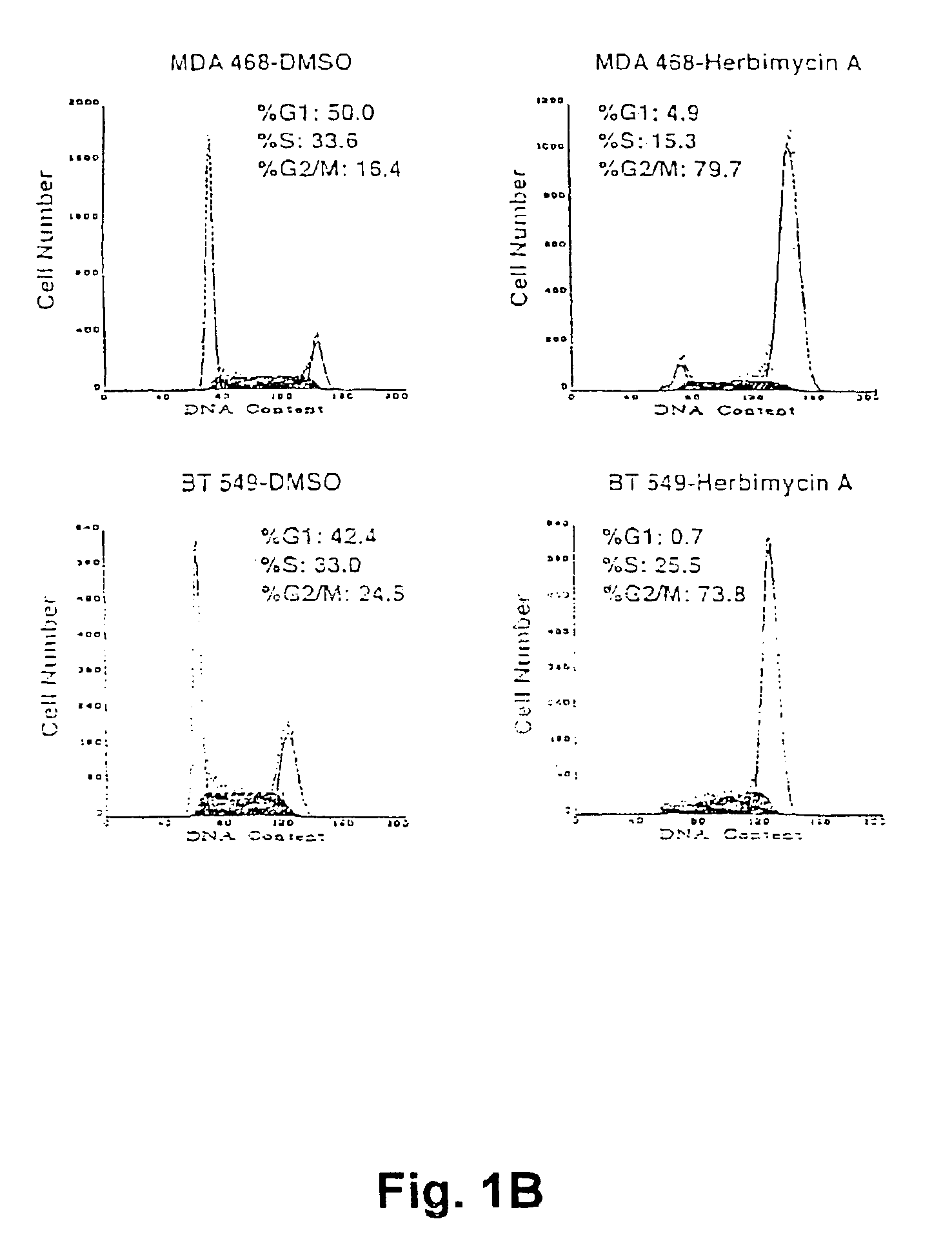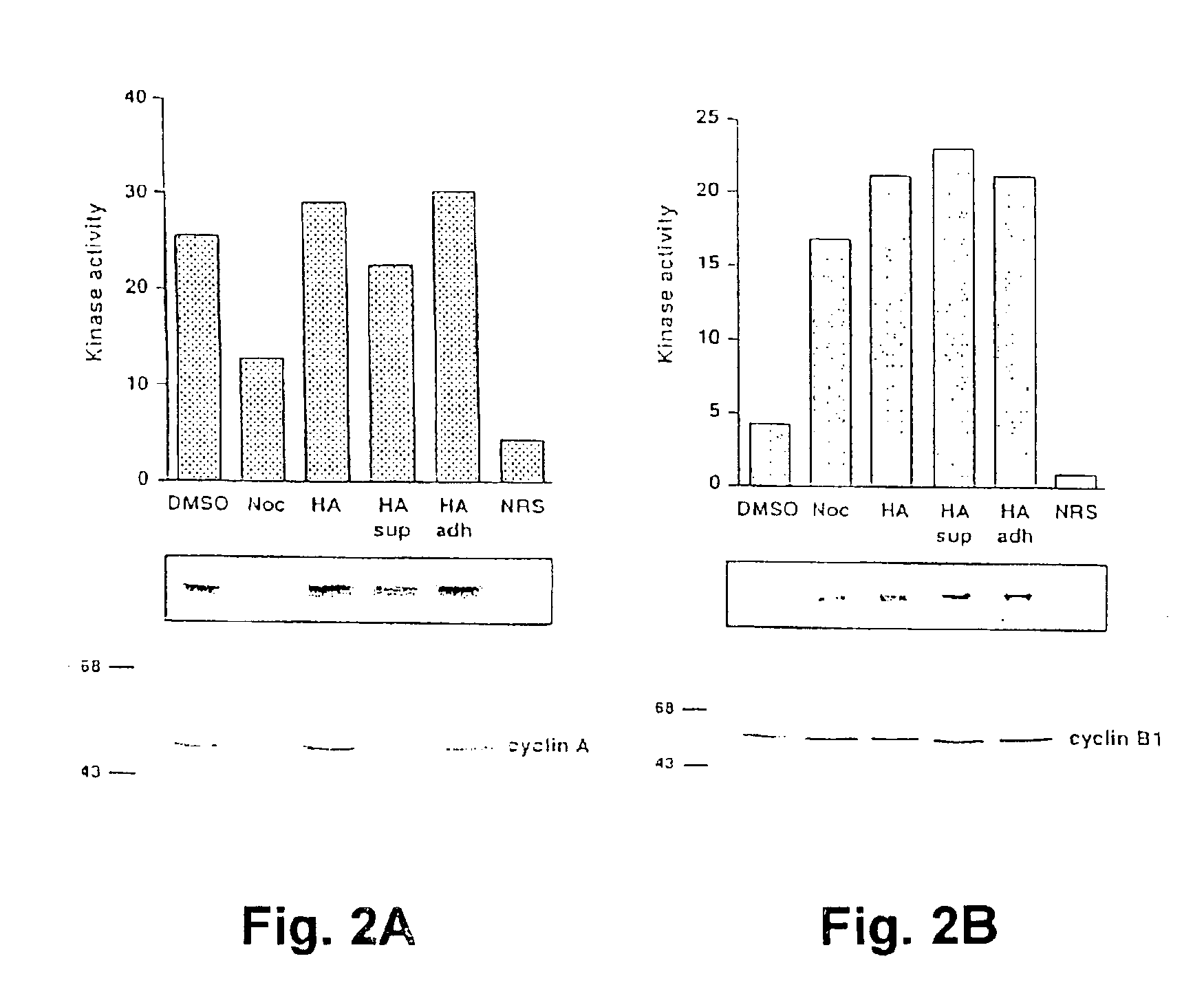Methods for treating cell proliferative disorders and viral infections
a cell proliferative disorder and viral infection technology, applied in the direction of biocide, drug composition, genetic material ingredients, etc., can solve the problems that most cancer therapies are not successful with all types of cancers, and solid tumor types ultimately fail to respond to radiation or chemotherapy, so as to improve understanding.
- Summary
- Abstract
- Description
- Claims
- Application Information
AI Technical Summary
Benefits of technology
Problems solved by technology
Method used
Image
Examples
example 1
Effect of Ansamycins on Cells with a Functional Rb Protein and Cells Lacking a Functional Rb Protein
Cell Culture:
[0089]The human breast cancer cell lines MB-MDA 468, MCF7 and BT-549 and the colon carcinoma cell line, Colo 205, were obtained from ATCC. Breast cell lines were maintained in DME-F12 media and Colo 205 cells in RPMI; both media were supplemented with 5% fetal calf serum (BRL), 2 mM glutamine and 50 u / ml each of penicillin and streptomycin. All cells were incubated at 37° C. in 5% C02.
[0090]Cells were treated for 24 hours with 250 ng / ml herbimycin A (Gibco) dissolved in DMSO or 435 nM of radicicol (Sigma).
[0091]After treatment the nuclei can Do stained wish ethidium bromide and analyzed by flow cytometry.
[0092]Nuclei were isolated for flow cytometry assays stained with ethidium bromide and analyzed using a Becton Dickinson fluorescence-activated cell sorter. Statistical data was obtained using Multicycle program software.
Results:
[0093]As shown in FIG. 1, in...
example 2
Analysis of Cell Arrest in Rb-Negative and Rb-Positive Cells Treated With HSP90 Inhibitors
Mitotic Index:
[0094]For mitotic indices, cells were typsinized, washed with PBS and fixed with 3% paraformaidehyde in PBS for 20 min. Cells were then stained with 3 μg / ml bisbenzimide (Hoechst 33258; Sigma) for 15 min and examined under fluorescence microscopy. Mitosis was scored by the presence of condensed chromosomes.
Immunofluorescent Analysis:
[0095]For immunofluorescent analysis, harvested cells were washed with PBS, fixed with methanol for 20 min at −20° C., washed again and blocked for 30 min with 2% BSA in PBS. Cells were then stained with anti-α-tubulin (Sigma) and anti-centromere protein antibodies (ACA / CREST) (gift of Dr. J. D. Rattner) in 2% BSA PBS for 1 hour. Following 3 washes with 0.5% BSA in PBS, cells were incubated with anti-human FITC conjugated, antimouse rhodamine conjugated antibodies (Molecular Probes) and 2 μg / ml bisbenzimide in 2% BSA in PBS for 45 min. Cells were then ...
example 3
Measurement of Mitotic Cyclins
Immunoblot Analysis:
[0098]Levels of mitotic cyclin expression and associated kinase activities in herbimycin arrested MB-MD468 cells were assessed using immunoblot analysis and in vitro kinase assays as described below. Cells cultured with herbimycin were enriched for mitotically arrested cells by using only the loosely adherent population in which the mitotic index was greater than 90%.
[0099]Immunoblot analysis of lysates from cells treated with DMSO, nocodazole or herbimycin were analyzed by Western blot analysis using anti-cyclin A or anti-B1 antibodies. Treated cells were harvested, washed with PBS and lysed in NP40 lysis buffer (50 mM Tris pH7.4, 1% NP40,150 mM NaCl, 40 mM NaF. 1 mM Na3VO4, 1 mM phenylmethylsulfonlylfluoride, and 10 μg / ml. each of leupeptin, aprotinin and soybean trypsin inhibitor) for 30 min on ice. Lysates were centrifuged at 15,000×g for 10 min and protein concentration determined by bicinchoninic acid protein assay (Pierce). Eq...
PUM
| Property | Measurement | Unit |
|---|---|---|
| pH | aaaaa | aaaaa |
| affinity | aaaaa | aaaaa |
| concentrations | aaaaa | aaaaa |
Abstract
Description
Claims
Application Information
 Login to View More
Login to View More - R&D
- Intellectual Property
- Life Sciences
- Materials
- Tech Scout
- Unparalleled Data Quality
- Higher Quality Content
- 60% Fewer Hallucinations
Browse by: Latest US Patents, China's latest patents, Technical Efficacy Thesaurus, Application Domain, Technology Topic, Popular Technical Reports.
© 2025 PatSnap. All rights reserved.Legal|Privacy policy|Modern Slavery Act Transparency Statement|Sitemap|About US| Contact US: help@patsnap.com



